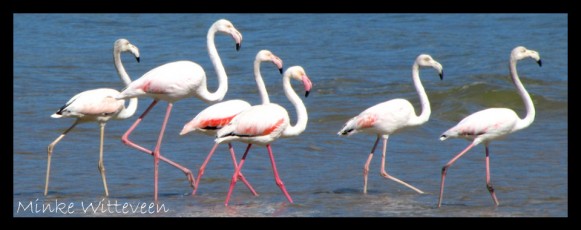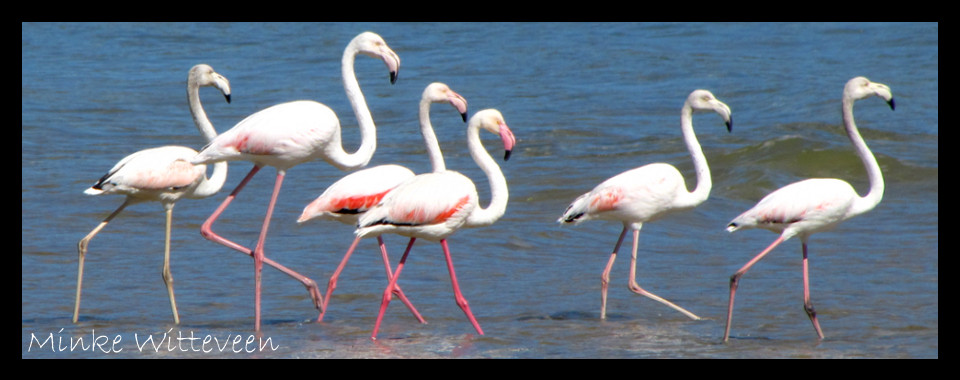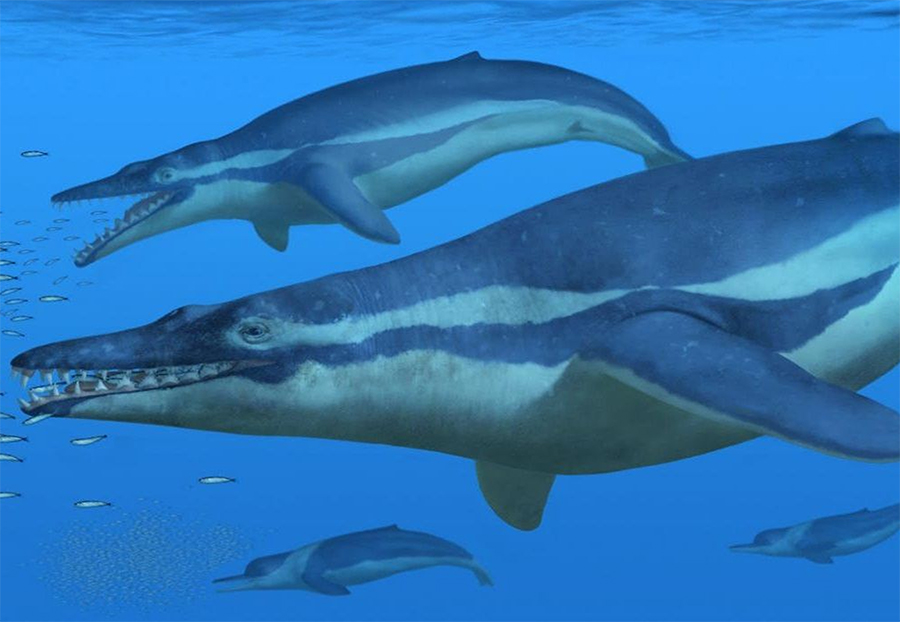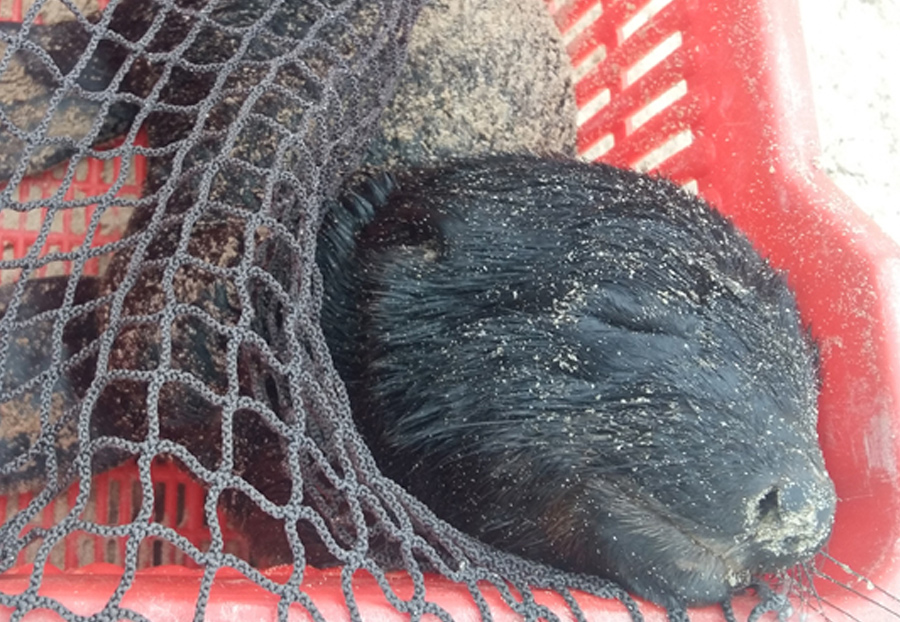Greater Flamingos in Poortjies, Plettenberg Bay

Over the past few weeks visitors to Keurbooms estuary have been able to see a group of Greater Flamingos Phoenicopterus roseus spending some time in beautiful Plettenberg Bay. These are quite odd looking creatures, with their long legs and long necks, and I can’t help but think back to Alice in Wonderland when the Queen of Hearts uses them as croquet mallets. Really though, they are beautiful creatures, standing 110-150 cm tall (males are distinctly larger), with primarily pinkish-white plumage, pink legs, and a black-tipped pink bill. Greater Flamingos can be seen throughout sub-Saharan Africa, and from West Africa eastward throughout the Mediterranean to south west and south Asia. They are a nomadic species with juveniles, and to a lesser extent adults, moving in response to food availability and water-level changes. Flocks will move between wetlands travelling mainly at night. Greater Flamingos are a sociable species and during the non-breeding season they can gather in large flocks, mixing with Lesser Flamingos Phoeniconaias minor, at sites rich in food, or at saline or alkaline water bodies to drink and bathe.
The feeding methods of the Greater Flamingo makes it an even more interesting species than it’s body shape belies. Firstly, instead of having a moveable bottom jaw like most other creatures, Greater Flamingos have a moveable top jaw. Additionally, they feed with their heads upside down! Curiouser and curiouser! Greater Flamingos use their feet to kick up sediment, and filter feed on large prey items such as crustaceans and molluscs.
Greater Flamingos are monogamous and build a mound made of mud as a nest into which they will lay 1 egg (very rarely are 2 eggs laid). The mud mound nest is built on an island in a shallow pan and as a result this species breeds erratically when water conditions are favourable. Greater Flamingo flocks are quite noisy with individuals emitting a goose-like honking, which seems to be at odds with its elegant appearance.
Written by: Minke Witteveen
For further reading:
- Sinclair, I. and Ryan, P. 2009. Complete Photographic Field Guide: Birds of Southern Africa. Struik Nature: Cape Town. Pp. 74.




